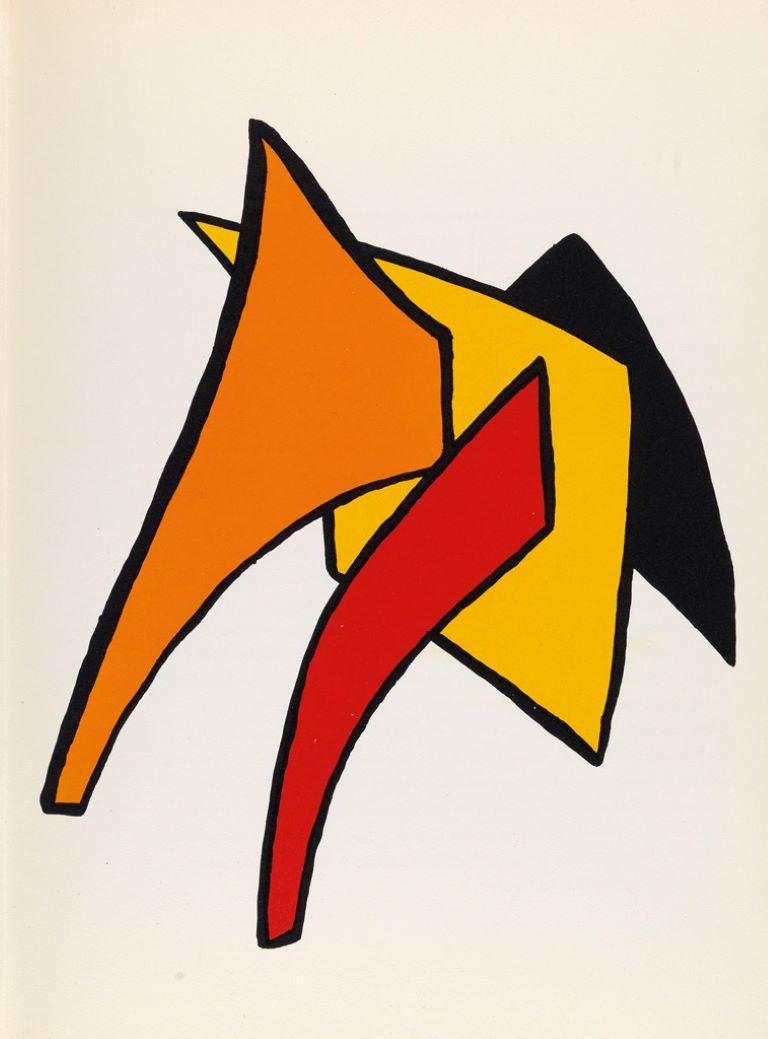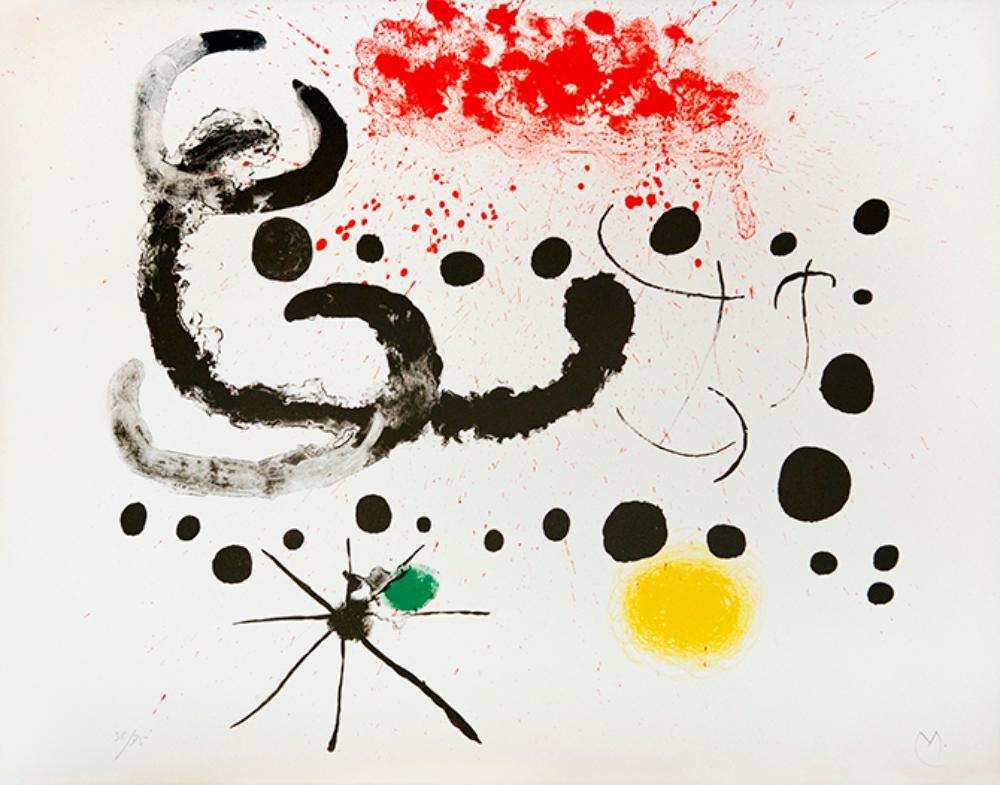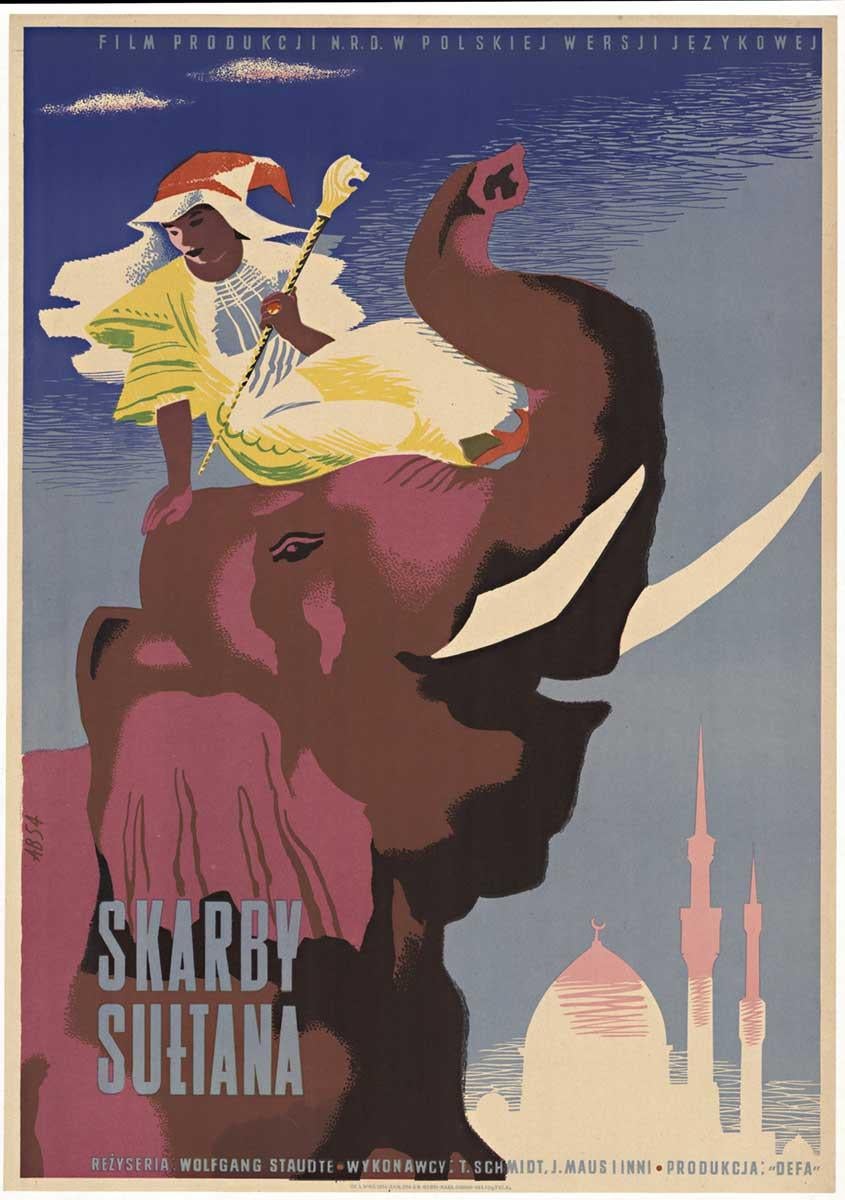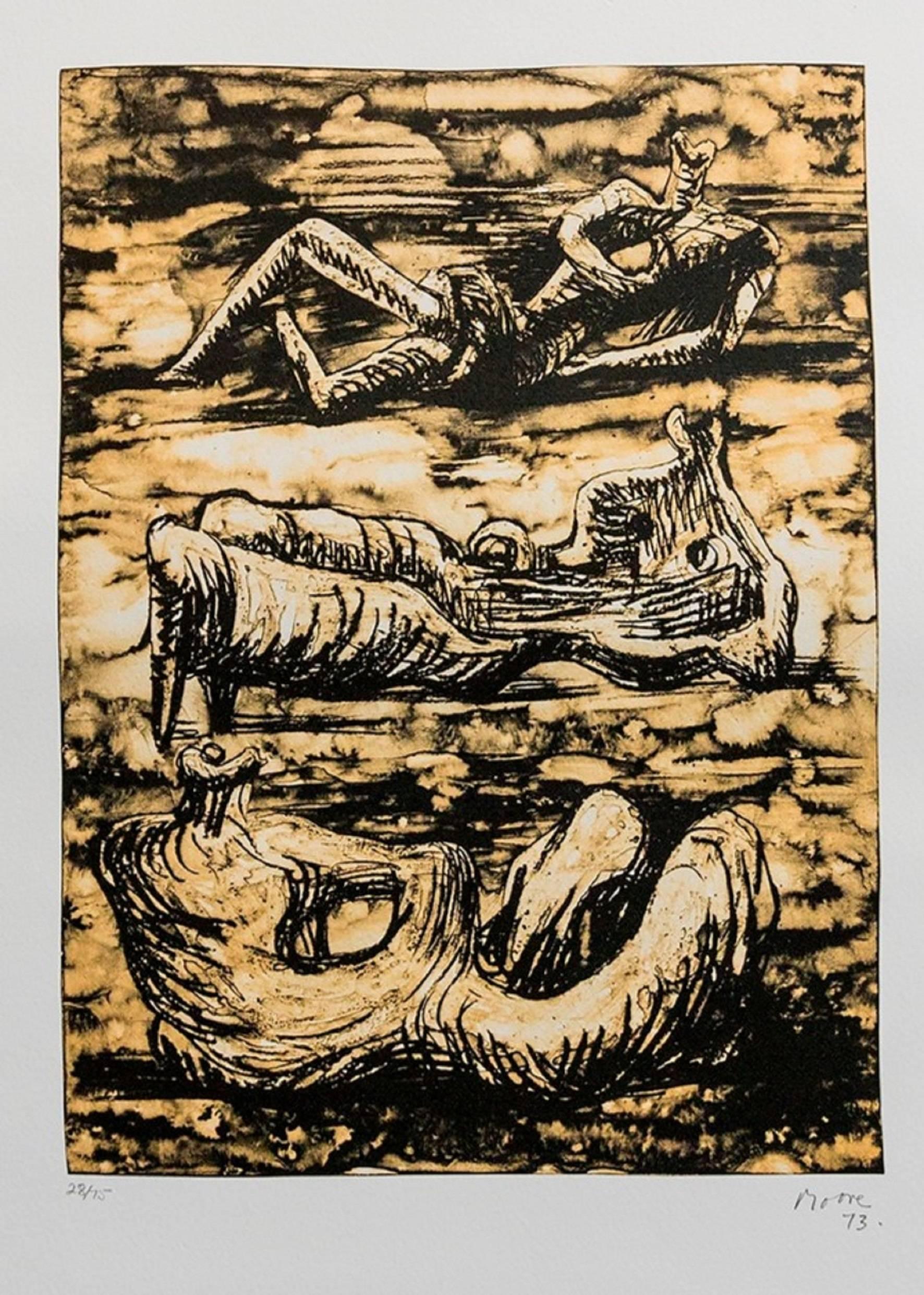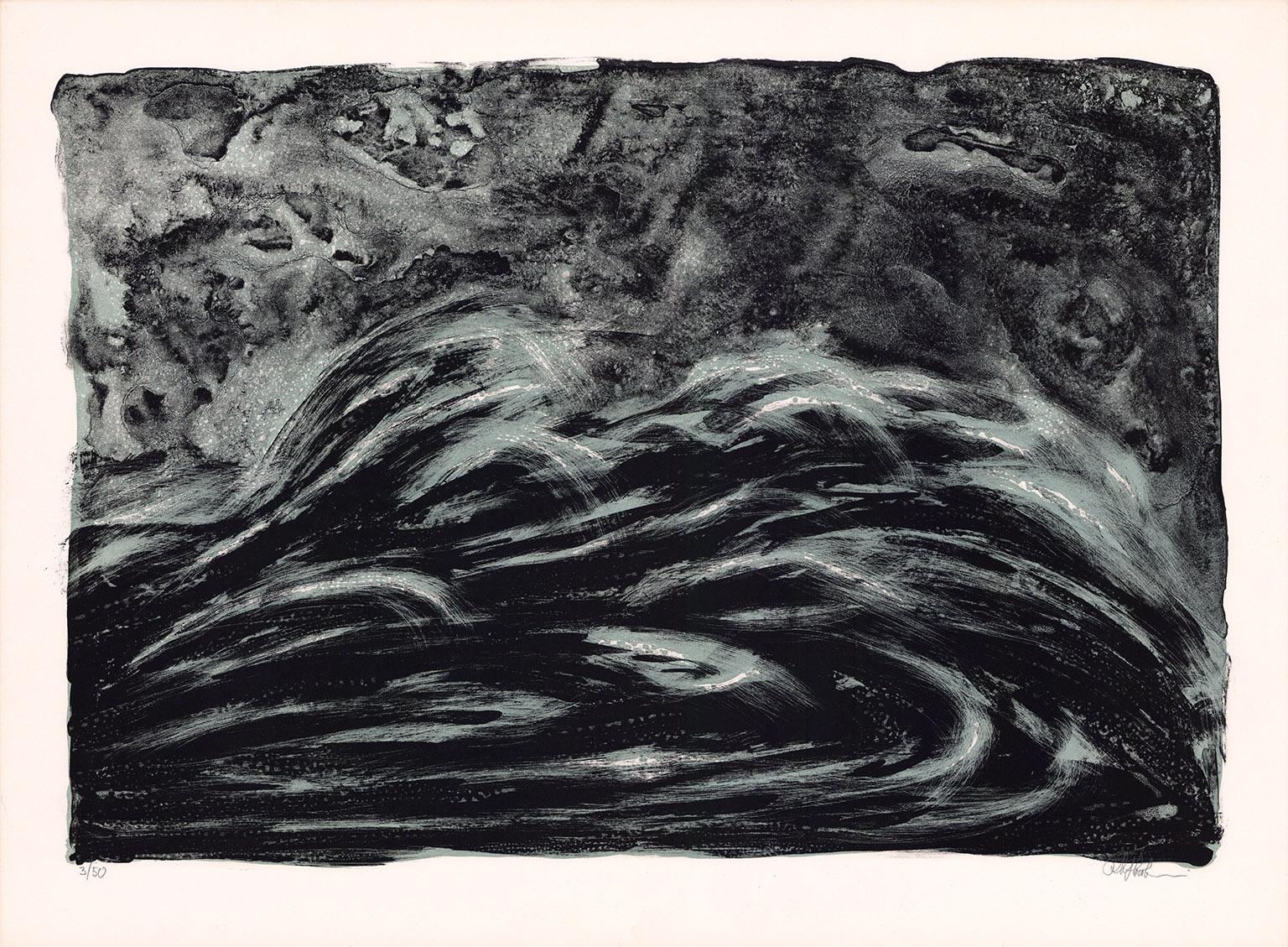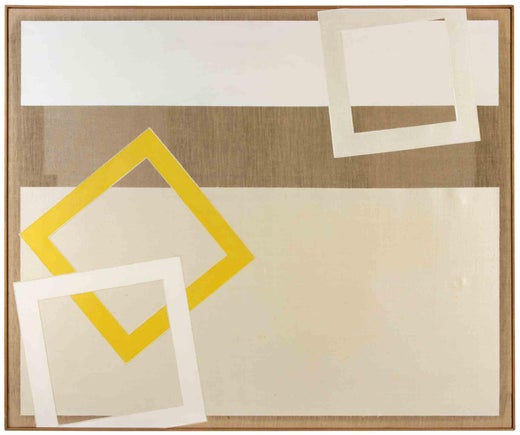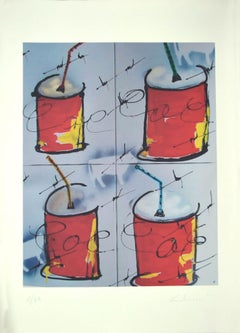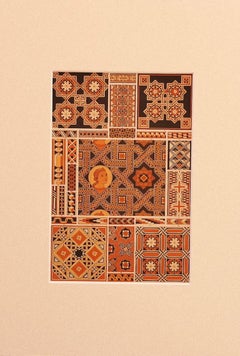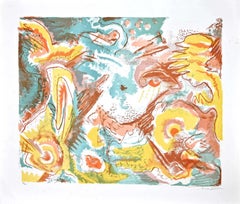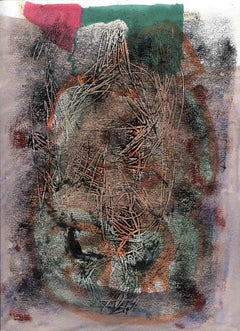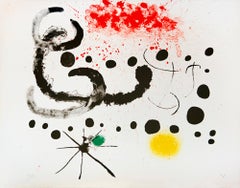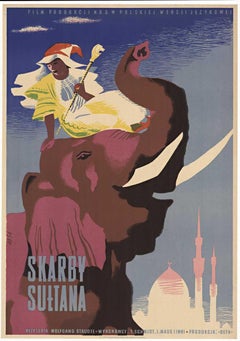Items Similar to Emerged Land - Lithograph by Mario Padovan - 1970s
Want more images or videos?
Request additional images or videos from the seller
1 of 7
Mario PadovanEmerged Land - Lithograph by Mario Padovan - 1970s1970s
1970s
About the Item
Emerged Land is a colored lithograph realized by Mario Padovan in the 1970s .
Hand-signed in pencil on the lower right. Numbered in pencil on the lower left. Edition of 16/50.
Good conditions except for some folds on the margins.
The artwork Emerged Land is part of the artist's collection of Op Art : in the late sixties and early seventies, indeed, Padovan focused his work on the research on the Op Art movement.
- Creator:Mario Padovan (1927, Italian)
- Creation Year:1970s
- Dimensions:Height: 27.56 in (70 cm)Width: 19.69 in (50 cm)Depth: 0.04 in (1 mm)
- Medium:
- Movement & Style:
- Period:
- Framing:Framing Options Available
- Condition:Insurance may be requested by customers as additional service, contact us for more information.
- Gallery Location:Roma, IT
- Reference Number:Seller: T-1349001stDibs: LU650311175062
Mario Padovan
Mario Padovan is an Italian Postwar & Contemporary painter born in 1927. His exploration of various artistic languages and movements reflects a relentless pursuit of self-expression and a profound engagement with the global artistic landscape. In the forties, Padovan delved into figurative art, beginning his artistic odyssey. The fifties saw him embracing informal art, followed by a foray into the vibrant world of Pop Art in the sixties. The seventies witnessed his experiments with Opt Art and image-splitting techniques, showcasing a willingness to push artistic boundaries. Throughout this journey, Padovan explored diverse materials and techniques, from traditional mediums like oil and acrylics to unconventional choices like colored sand, ready-made objects, paper, wood, steel, and even cold light. These elements, when combined, enriched his artistic expression, creating a multifaceted body of work. Padovan's artistic repertoire expanded to encompass sculpture, conceptual installations, and the creation of artist books to meet his evolving creative needs. Critics aptly labeled him a "creative nomad," acknowledging his responsiveness to inner impulses that guided his artistic evolution. In the eighties, Padovan's focus shifted to the geometry of the square, a fascination that would persist for decades. His exploration of geometric forms evolved into illuminated envelopes, a theme that gained prominence in his works. A significant milestone in Padovan's career occurred in 1984 when he exhibited at the 41st Venice Biennale, following an invitation from Giorgio Di Genova and Giovanni Carandente. Subsequent exhibitions showcased his unique blend of classical art citations, mainly drawing inspiration from the Renaissance and Baroque eras. The artist's geometric interpolations and extrapolations inspired by Bernini's Fontana dei Fiumi and Michelangelo's Sistine Chapel figures were exhibited in Rome, Viterbo, and Ferrara, further solidifying his reputation as an artist with a profound connection to classical art. In 2000, Padovan found inspiration in the baroque angels of Ponte Sant'Angelo in Rome, infusing geometric and light elements to highlight the formal perfection of classical art. This marked a continuous dialogue with the past, a theme encapsulated by Picasso's words: "A mediocre artist imitates while a genius copies." As Padovan approaches ninety, his artistic curiosity remains undiminished. His ongoing studies delve into the coherence of numbers, the aesthetic mystery of Phidias' Golden Mean, modern graphic techniques, universal DNA, and the history of monotheistic religions. This relentless pursuit of knowledge and creativity epitomizes Padovan's "creative madness," a term he uses to describe the enduring passion that fuels his artistic exploration and innovation.
About the Seller
4.9
Platinum Seller
Premium sellers with a 4.7+ rating and 24-hour response times
1stDibs seller since 2017
7,496 sales on 1stDibs
Typical response time: 2 hours
- ShippingRetrieving quote...Shipping from: Roma, Italy
- Return Policy
Authenticity Guarantee
In the unlikely event there’s an issue with an item’s authenticity, contact us within 1 year for a full refund. DetailsMoney-Back Guarantee
If your item is not as described, is damaged in transit, or does not arrive, contact us within 7 days for a full refund. Details24-Hour Cancellation
You have a 24-hour grace period in which to reconsider your purchase, with no questions asked.Vetted Professional Sellers
Our world-class sellers must adhere to strict standards for service and quality, maintaining the integrity of our listings.Price-Match Guarantee
If you find that a seller listed the same item for a lower price elsewhere, we’ll match it.Trusted Global Delivery
Our best-in-class carrier network provides specialized shipping options worldwide, including custom delivery.More From This Seller
View AllComposition - Original Lithograph - Late 20th Century
Located in Roma, IT
Composition is an original lithograph artwork on canvas, realized by The artist of The 20 Century
Hand-signed on the lower right.
Numbered on the lower left, Edition 1/49.
The sta...
Category
Late 20th Century Modern Abstract Prints
Materials
Lithograph
Gothic Wood - Offset and Lithograph - Early 20th Century
Located in Roma, IT
Gothic Wood Inlays is an original print on paper realized in offset and lithograph techniques in the early 20th Century.
Included a Passepartout: 49x 34 ...
Category
Early 20th Century Modern Abstract Prints
Materials
Offset, Lithograph
Surrealistic Composition - Original Lithograph by Le Oben - 1970s
By Le Oben
Located in Roma, IT
Surrealistic Composition is an original lithograph realized by Le Oben in 1970s.
This original print is hand signed. This is an edition 54 of 100 pieces.
Category
1970s Modern Abstract Prints
Materials
Lithograph
Figure - Original Lithograph - Mid-20th Century
Located in Roma, IT
Figure is an original lithograph on paper realized by an anonymous artist of the mid-20th Century.
In very good conditions.
The artwork created through confident strokes, short and...
Category
Mid-20th Century Modern Abstract Prints
Materials
Lithograph
Three Reclining Figures
By Henry Moore
Located in Roma, IT
Lithograph, 1976.
DImensions: 57x78 cm.
Printed at the Curwen Studio and published by Rome’s Galleria Marino in 1976 in just 50 copies, Three Reclining Figures...
Category
1970s Modern Abstract Prints
Materials
Lithograph
Le Belle di Sera - Lithograph by Massimo Campigli - 1967
By Massimo Campigli, 1895-1971
Located in Roma, IT
Hand signed. Artist's Proof.
“Le Belle di sera” is the title that Massimo Campigli gave to this intense lithograph (1967). The protagonists of this composition are four women that ar...
Category
1960s Modern Abstract Prints
Materials
Lithograph
You May Also Like
Derriere le Miroir: Stabiles
By Alexander Calder
Located in New York, NY
Portfolio with complete text is one of 150 deluxe numbered copies. It consists of 7 boldly colored lithographs and color lithograph cover. The sheets are loose as issued. Signed in p...
Category
1960s Modern Abstract Prints
Materials
Color, Lithograph
Plate XII, from Album 19
By Joan Miró
Located in London, GB
Lithograph in colours, 1961, on BFK Rives wove paper, signed with the artist's monogram in pencil, numbered from the edition of 75 (the total edition included 15 impressions numbered...
Category
1960s Modern Abstract Prints
Materials
Lithograph
Composition in Black - Lithograph
By Eduardo Chillida
Located in Paris, IDF
Eduardo CHILLIDA (after)
Composition in Black
Lithograph
Signed in the plate
On kraft paper 81 x 55,5 cm (c. 32 x 22 in)
Excellent condition
Category
Late 20th Century American Modern Abstract Prints
Materials
Lithograph
Original Skarby Sultana a.k.a. The Story of Little Muck vintage poster
Located in Spokane, WA
Orignial Skarby Sultana vintage poster. A.k.a.The Story of Little Much. Archival linen-backed Very good condition A. Bright and vibrant, lithograph, no stains, no damage, no...
Category
1950s American Modern Abstract Prints
Materials
Lithograph
Henry Moore 1973 Lithograph edition 28/75 Sculpture Figures Reclining Nudes
By Henry Moore
Located in Surfside, FL
Henry Spencer Moore (1898 – 1986)
Moore was born in Castleford, the son of a coal miner. He became well-known through his carved marble and larger-scale abstract cast bronze sculptures, and was instrumental in introducing a particular form of modernism to the United Kingdom later endowing the Henry Moore Foundation, which continues to support education and promotion of the arts.
After the Great War, Moore received an ex-serviceman's grant to continue his education and in 1919 he became a student at the Leeds School of Art (now Leeds College of Art), which set up a sculpture studio especially for him. At the college, he met Barbara Hepworth, a fellow student who would also become a well-known British sculptor, and began a friendship and gentle professional rivalry that lasted for many years. In Leeds, Moore also had access to the modernist works in the collection of Sir Michael Sadler, the University Vice-Chancellor, which had a pronounced effect on his development. In 1921, Moore won a scholarship to study at the Royal College of Art in London, along with Hepworth and other Yorkshire contemporaries. While in London, Moore extended his knowledge of primitive art and sculpture, studying the ethnographic collections at the Victoria and Albert Museum and the British Museum.
Moore's familiarity with primitivism and the influence of sculptors such as Constantin Brâncuși, Jacob Epstein, Henri Gaudier-Brzeska and Frank Dobson led him to the method of direct carving, in which imperfections in the material and marks left by tools became part of the finished sculpture. After Moore married, the couple moved to a studio in Hampstead at 11a Parkhill Road NW3, joining a small colony of avant-garde artists who were taking root there. Shortly afterward, Hepworth and her second husband Ben Nicholson moved into a studio around the corner from Moore, while Naum Gabo, Roland Penrose, Cecil Stephenson and the art critic Herbert Read also lived in the area (Read referred to the area as "a nest of gentle artists"). This led to a rapid cross-fertilization of ideas that Read would publicise, helping to raise Moore's public profile. The area was also a stopping-off point for many refugee artists, architects and designers from continental Europe en route to America—some of whom would later commission works from Moore.
In 1932, after six year's teaching at the Royal College, Moore took up a post as the Head of the Department of Sculpture at the Chelsea School of Art. Artistically, Moore, Hepworth and other members of The Seven and Five Society would develop steadily more abstract work, partly influenced by their frequent trips to Paris and their contact with leading progressive artists, notably Pablo Picasso, Georges Braque, Jean Arp and Alberto Giacometti. Moore flirted with Surrealism, joining Paul Nash's modern art movement "Unit One", in 1933. In 1934, Moore visited Spain; he visited the cave of Altamira (which he described as the "Royal Academy of Cave Painting"), Madrid, Toledo and Pamplona. Moore made his first visit to America when a retrospective exhibition of his work opened at the Museum of Modern Art in New York City.[28]
Before the war, Moore had been approached by educator Henry Morris, who was trying to reform education with his concept of the Village College. Morris had engaged Walter Gropius as the architect for his second village college at Impington near Cambridge, and he wanted Moore to design a major public sculpture for the site.
In the 1950s, Moore began to receive increasingly significant commissions. He exhibited Reclining Figure: Festival at the Festival of Britain in 1951, and in 1958 produced a large marble reclining figure for the UNESCO building in Paris. With many more public works of art, the scale of Moore's sculptures grew significantly and he started to employ an increasing number of assistants to work with him at Much Hadham, including Anthony Caro and Richard Wentworth.
Moore produced at least three significant examples of architectural sculpture during his career. In 1928, despite his own self-described extreme reservations, he accepted his first public commission for West Wind for the London Underground Building at 55 Broadway in London, joining the company of Jacob Epstein and Eric Gill..At an introductory speech in New York City for an exhibition of one of the finest modernist sculptors, Alberto Giacometti, Sartre spoke of The beginning and the end of history...
Category
1970s Modern Abstract Prints
Materials
Lithograph
Waves
By Richard Florsheim
Located in New York, NY
Richard Florsheim created this color lithograph entitled “Waves” in 1973 in an edition of 50 pieces. Printed by Mourlot Press, Paris, this impression is signed and inscribed “3/50” – the third print of fifty. It is in good condition with full original color. The printed image size is 16 3/8 x 23.75 inches and the paper size is 19.75 x 26.50 inches.
RICHARD ABERLE FLORSHEIM...
Category
1970s American Modern Abstract Prints
Materials
Lithograph
Recently Viewed
View AllMore Ways To Browse
Nguyen Manh Khanh
Niko Ghika
Ouchi Makoto
Oy Yo
Peter Alexander On Sale
Peter Mandala
Picasso Yan
Ramon Vasquez
Robert Indiana Indiana In Lewiston
Robert Rauschenberg Print Earth Day
Romano Campagnoli
Rosa Luxemburg
Rosemarie Castoro
Ross Stefan
Roy Ahlgren Homage To The Cross
Roy Lichtenstein Cathedral
Salvador Dali Tristan And Isolde
Saxony Watch Company
